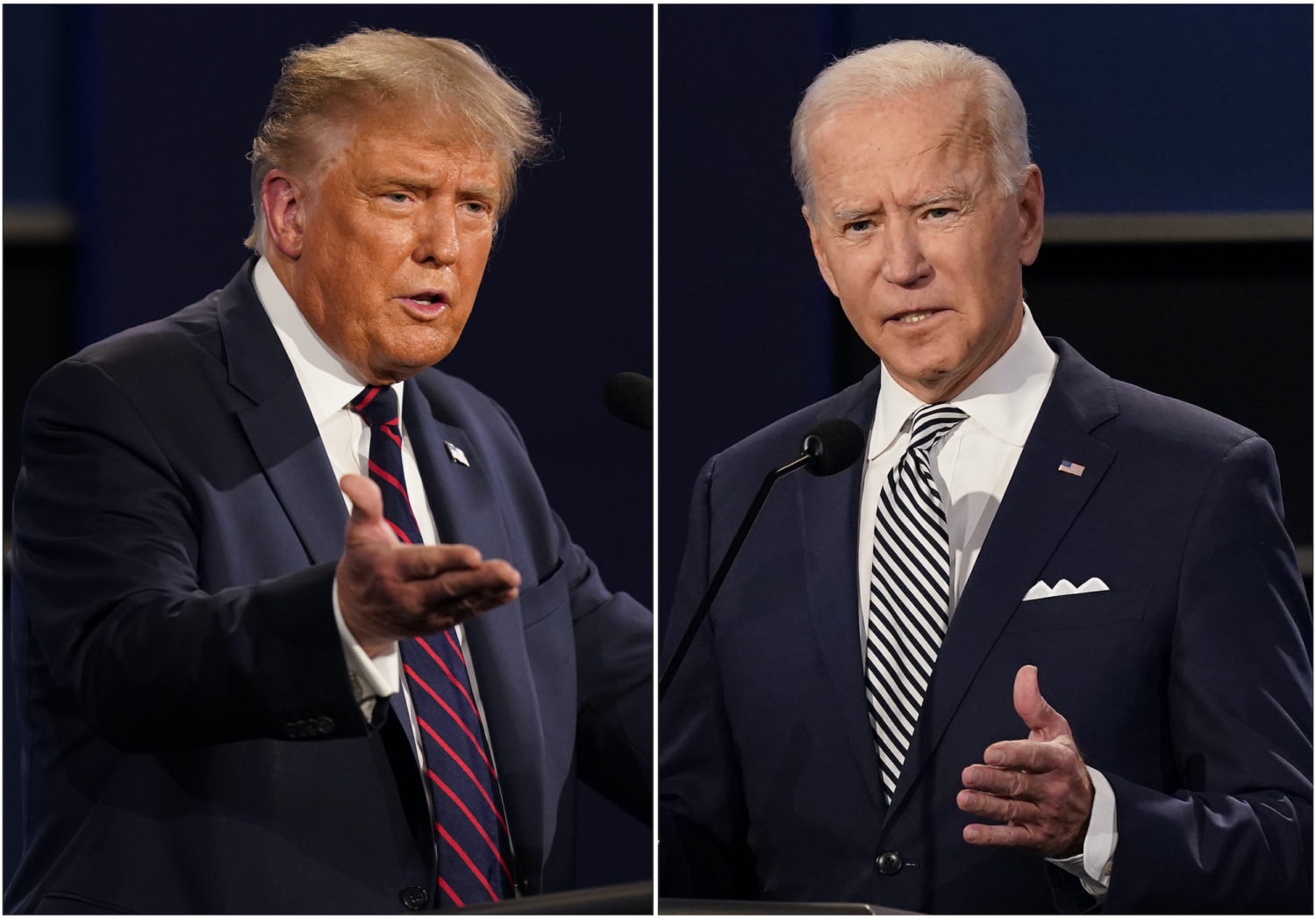President Joe Biden sitting in an “invisible” chair in France. Biden wandering off from an event in Italy. Biden freezing on stage at a Los Angeles fundraiser. These misleading claims and others, based on videos that are deceptively edited or taken out of context, have flooded voters’ social media platforms in the last two weeks.
These videos, called cheap fakes, have become a common tactic to undermine Biden’s fitness for office as the 81-year-old seeks reelection. Former President Donald Trump, the presumptive Republican nominee, is 78.
While the Biden campaign has pushed back on these videos, Trump and his allies have played up the viral clips. Trump’s campaign attempted to redefine cheap fakes as “any unedited video of Joe Biden’s cognitive decline that the Biden administration does not want the public to see.”
Trump and his campaign “have a tendency to repurpose and twist words to suit their purposes,” said Samuel Woolley, an assistant professor at the University of Texas at Austin’s School of Journalism and Media. Woolley pointed to the example of Trump redefining “fake news” as any news that disagrees with him, rather than false content.
Not every video of Biden having an awkward moment or making a gaffe is a cheap fake. But increasingly, footage of the president has been manipulated to push false and misleading claims.
Here’s how “cheap fakes” entered the 2024 election glossary, and how experts define the term, apart from the political spin.
‘Cheap fake’ is not new terminology
Misinformation researchers first coined the term “cheap fake” in 2019, as “deepfake” videos made with artificial intelligence grew more popular. Cheap fakes are real videos that have been manually edited with low-cost, easy-to-access tools or taken out of context.
Some social media users falsely claimed White House Press Secretary Karine Jean-Pierre invented the term “cheap fake.”
After showing footage of Jean-Pierre talking about the spree of edited Biden clips, the narrator in a June 18 Instagram video said, “Cheap fake videos? Did she just make that up? That’s not even a word or a thing. … They’re telling you guys that those videos are fake and manipulated when it is raw footage not tampered with at all.”
Creators of cheap fakes use techniques such as slowing or speeding footage, cropping or zooming in on videos, and clipping parts of videos to omit the full context.
By contrast, “deepfake” videos are typically more sophisticated because they are created with AI technology. Deepfakes can be real videos manipulated by AI, or videos produced entirely by AI.
Darren Linvill, a Clemson University communication professor specializing in social media disinformation, said cheap fakes have several advantages over other tools of disinformation. Those include being easy to create and difficult for social media platforms to regulate because they often don’t violate the platforms’ rules, said Linvill, who also serves as co-director of Clemson’s Media Forensics Hub. Meta’s Third Party Fact-Checking program, for instance, does not apply to politicians.
“Third, and perhaps most importantly, cheap fakes can take easy advantage of human psychology. If I believe that either Trump or Biden are old and losing their faculties, seeing even a brief piece of video that supports that belief will quickly reinforce it and entrench it,” Linvill said.
Examples of deceptively edited videos of Biden
Numerous recent videos of Biden at public events and press conferences have been taken out of context or edited to misconstrue his words or actions. RNCResearch, an X account run by the Republican National Committee and Trump’s campaign, is often among the first to share these clips.
- Video from Biden’s June 18 fundraiser in Los Angeles claimed to show the president freezing on stage and being escorted away by former President Barack Obama. The Associated Press fact-checked this claim, reporting that Biden paused for a few moments on stage amid applause.
- A few days earlier, on June 13, a video claimed to show Biden wandering away from other world leaders during a skydiving demonstration at the G7 summit in Italy. We rated that claim False. A longer video of the event shows Biden turning to speak with other parachuters who could not be seen in the edited clip.
- Earlier this month, after Biden’s June 6 speech at the 80th anniversary of the D-Day invasion in Normandy, France, social media users circulated edited video clips, claiming the president sat in an “imaginary chair,” had a bowel movement and left the event prematurely. The event’s full video did not support these claims; neither did news reports of the event.
Other examples are plentiful. In April, Fox News host Sean Hannity falsely claimed Biden was ignored at a gas station. PolitiFact has fact-checked several other misleadingly edited videos of Biden through the years.
How Biden, Trump have responded to cheap fakes
During a June 17 White House press briefing, Jean-Pierre said the recent videos were “done in bad faith.”
Jean-Pierre mistakenly referred to the videos as “deepfakes” at one point. Trump also has mistakenly called them “clean fakes.”
White House spokesperson Andrew Bates has also repeatedly called out these videos on X, sharing links to news outlets fact-checking the claims. Politico reported June 18 that the Biden campaign “has established a taskforce to mitigate the risks posed by AI and cheap fakes.”
The Biden campaign also took a jab at Trump, highlighting the former president’s awkward moments and gaffes in a video posted June 20 on X. The post said, “Here is a montage of Donald Trump getting confused, lost, wandering off, and waving to nobody.” Each video clip included the original audio, without any voiceovers or subtitles.
The Trump campaign pushed back on the 2-minute, 24-second video, calling it a cheap fake without citing specific evidence.
“When politicians and campaigns misuse particular terms, it further sows confusion and serves to politicize certain turns of phrase,” Woolley said.
This fact check was originally published by PolitiFact, which is part of the Poynter Institute. See the sources for this fact check here.







